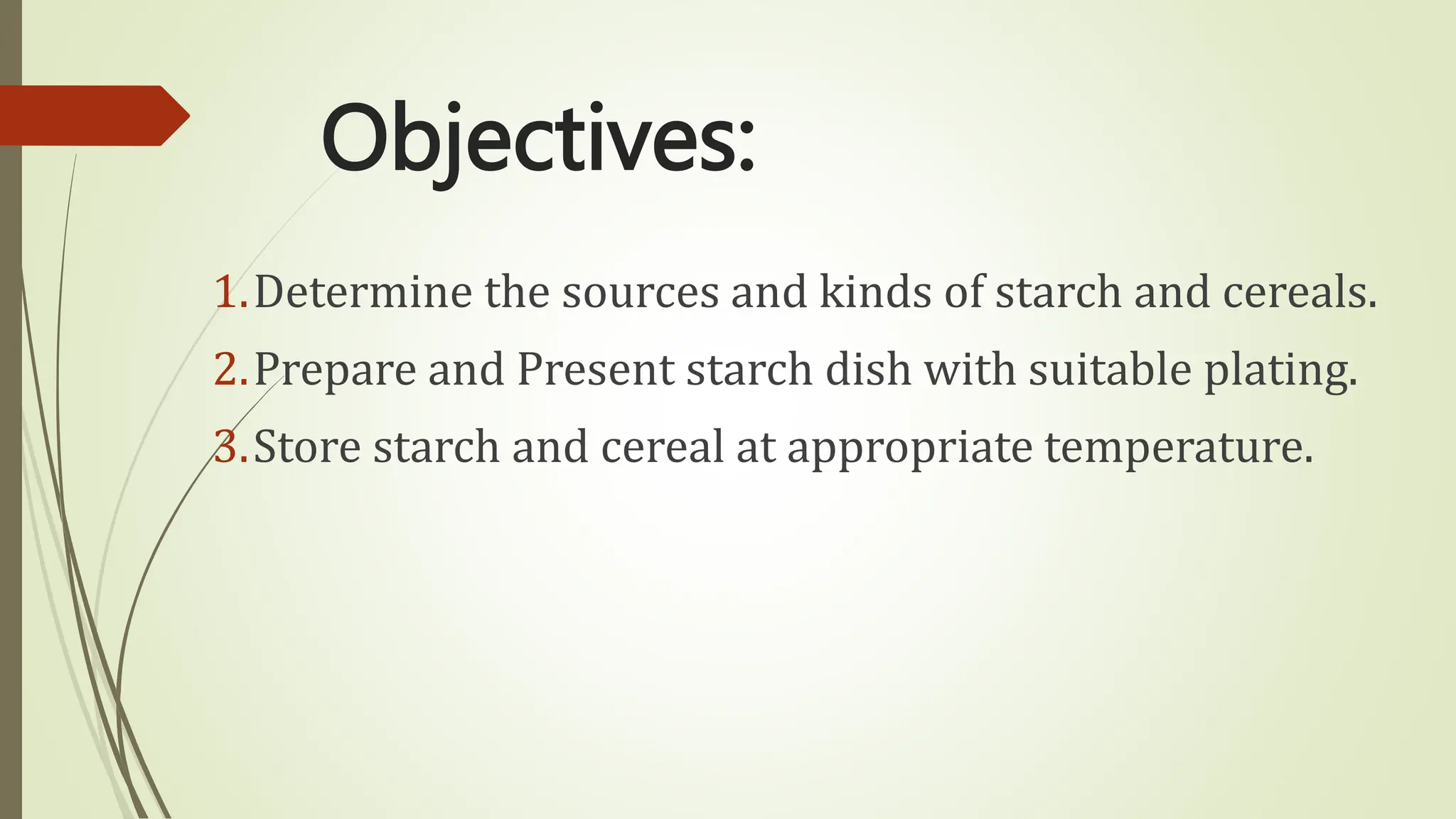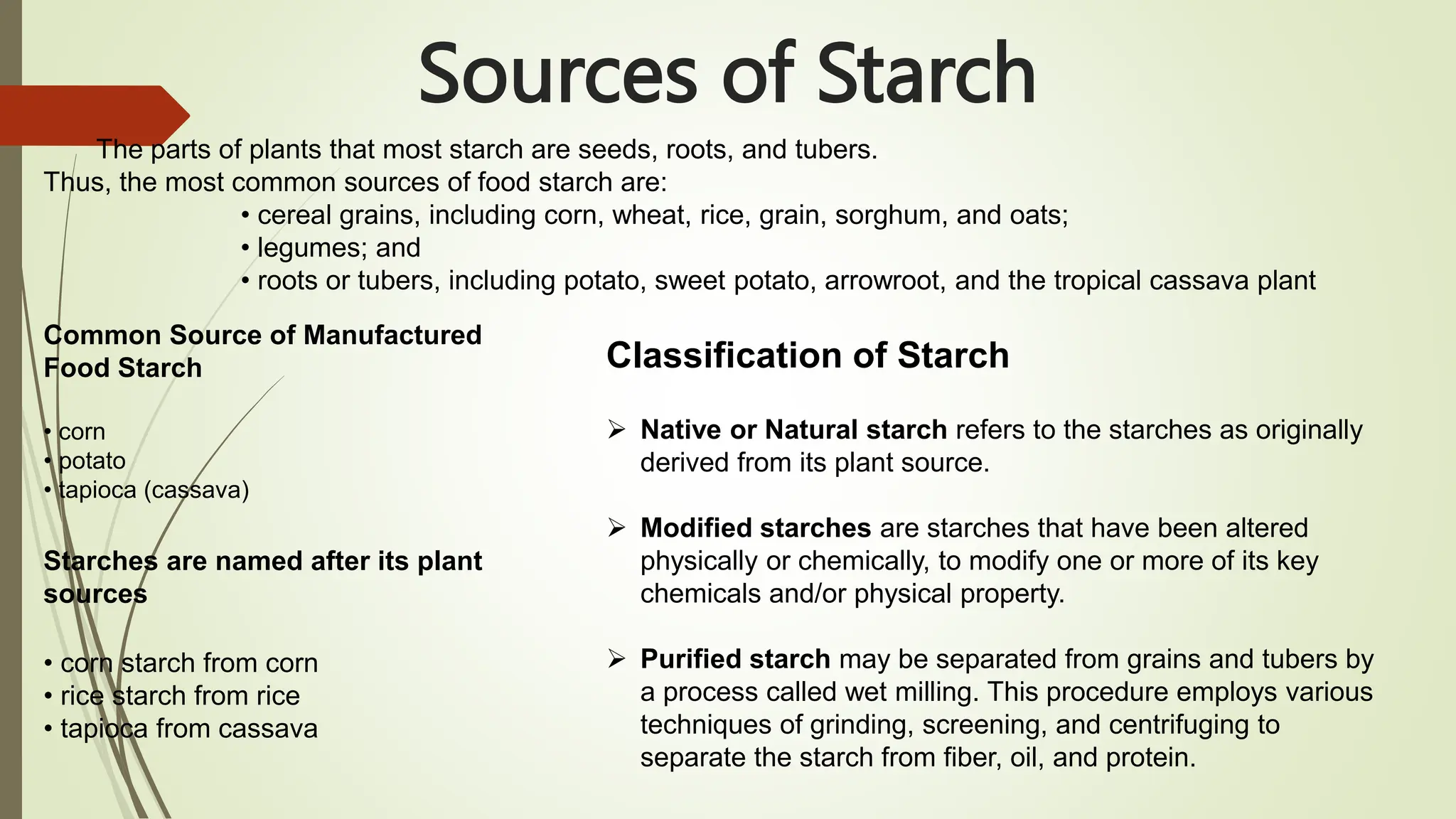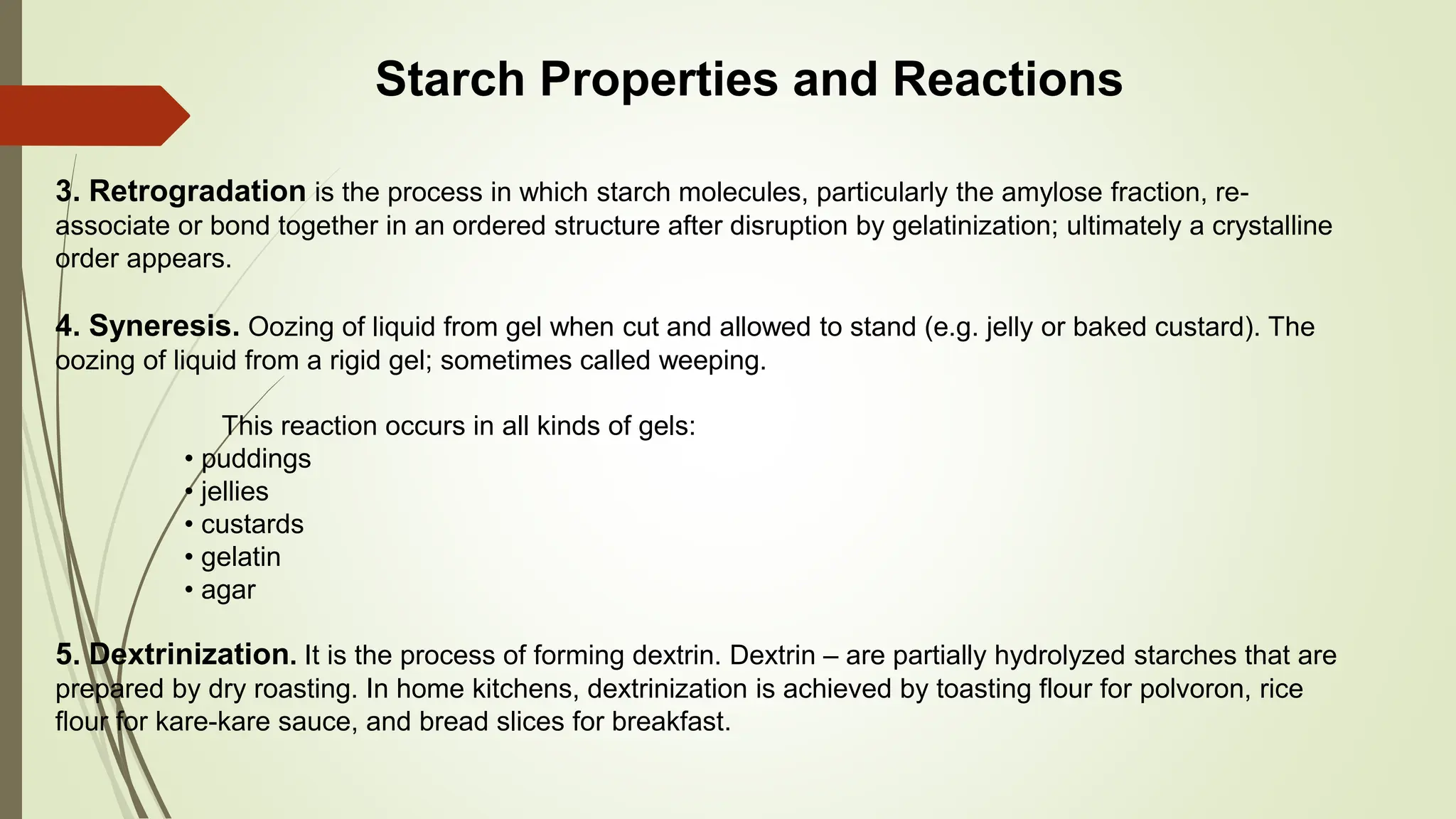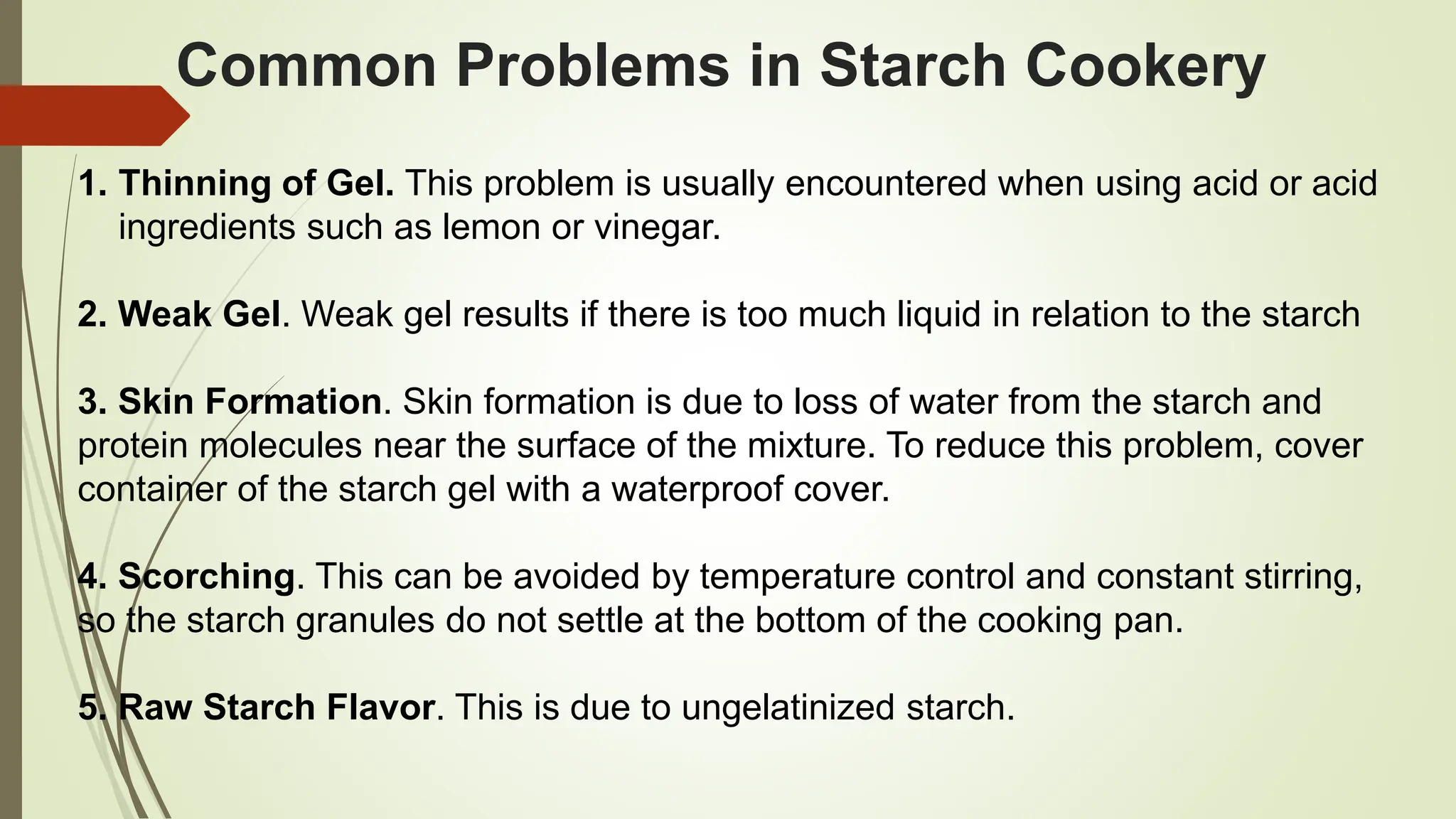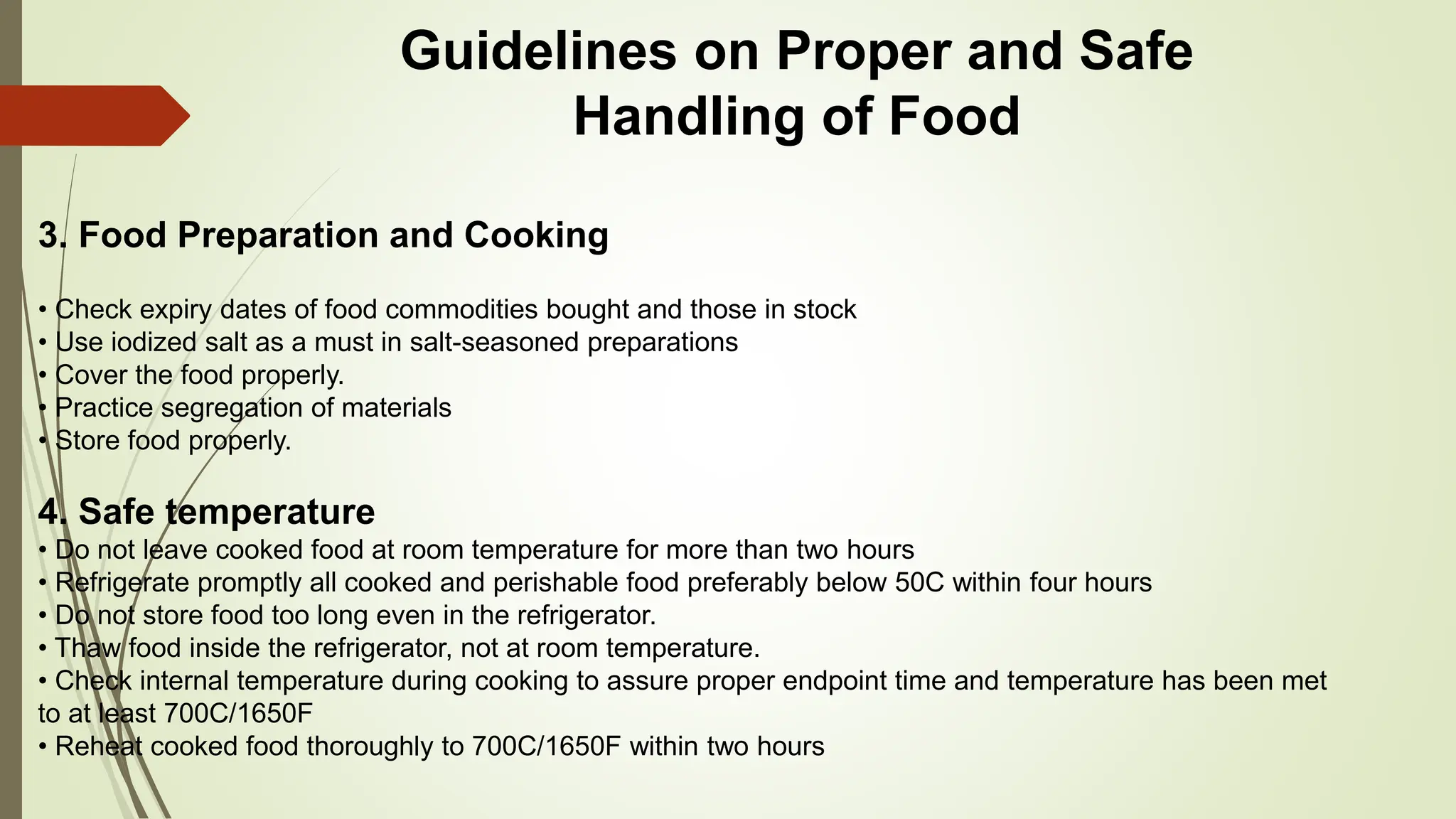The document outlines the preparation, storage, and nutritional significance of cereals and starch dishes, emphasizing the importance of proper cooking techniques for optimal texture and flavor. Key components include the classification of starches, their functional properties in various applications, and guidelines for safe food handling. It also discusses types of pasta, cooking methods, and presents a specific fettuccine alfredo recipe.

